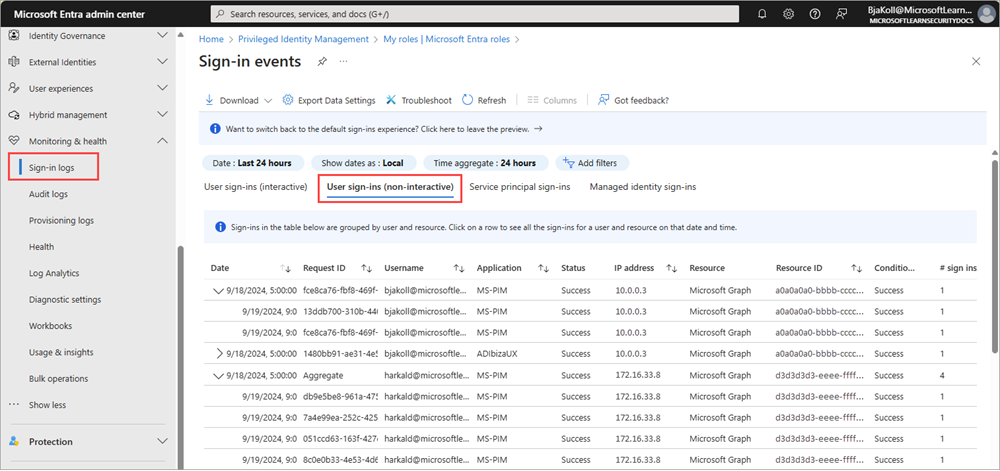What are non-interactive user sign-ins in Microsoft Entra?
Microsoft Entra monitoring and health provides several types of sign-in logs to help you monitor the health of your tenant. Non-interactive sign-ins are a subset of the user sign-in logs in the Microsoft Entra admin center.
What is a non-interactive user sign-in?
Non-interactive sign-ins are done on behalf of a user. These delegated sign-ins were performed by a client app or OS components on behalf of a user and don't require the user to provide an authentication factor. Instead, Microsoft Entra ID recognizes when the user's token needs to be refreshed and does so behind the scenes, without interrupting the user's session. In general, the user perceives these sign-ins as happening in the background.
Log details
Report size: Large
Examples:
- A client app uses an OAuth 2.0 refresh token to get an access token.
- A client uses an OAuth 2.0 authorization code to get an access token and refresh token.
- A user performs single sign-on (SSO) to a web or Windows app on a Microsoft Entra joined PC (without providing an authentication factor or interacting with a Microsoft Entra prompt).
- A user signs in to a second Microsoft Office app while they have a session on a mobile device using FOCI (Family of Client IDs).
In addition to the default fields, the non-interactive sign-in log also shows:
- Resource ID
- Number of grouped sign-ins
You can't customize the fields shown in this report.
Note
Entries in the sign-in logs are system generated and can't be changed or deleted.
How does it work?
To make it easier to digest the data, non-interactive sign-in events are grouped. Clients often create many non-interactive sign-ins on behalf of the same user in a short time period. The non-interactive sign-ins share the same characteristics except for the time the sign-in was attempted. For example, a client might get an access token once per hour on behalf of a user. If the state of the user or client doesn't change, the IP address, resource, and all other information is the same for each access token request. The only state that does change is the date and time of the sign-in.
When Microsoft Entra logs multiple sign-ins that are identical other than time and date, those sign-ins are from the same entity and are aggregated into a single row. A row with multiple identical sign-ins (except for date and time issued) has a value greater than one in the # sign-ins column. These aggregated sign-ins might also appear to have the same time stamps. The Time aggregate filter can set to 1 hour, 6 hours, or 24 hours. You can expand the row to see all the different sign-ins and their different time stamps.
Sign-ins are aggregated in the non-interactive users when the following data matches:
- Application
- User
- IP address
- Status
- Resource ID
Note
The IP address of non-interactive sign-ins performed by confidential clients doesn't match the actual source IP of where the refresh token request is coming from. Instead, it shows the original IP used for the original token issuance.

